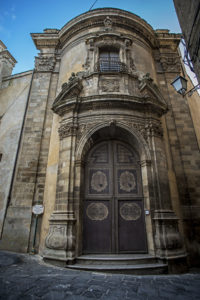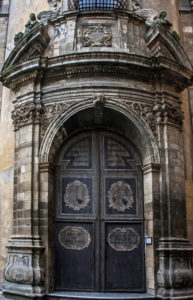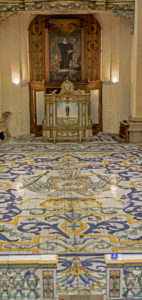The church of Santa Chiara (St. Claire) is located in the eastern part of the town on Via Giovanni Bosco, not far from the church of Gesù (Jesus).
Legend has it that it was St. Claire who had both the church and monastery built. Unfortunately, nothing has been preserved of the ancient structures.
The earthquake of 1693 damaged both buildings. Reconstruction was not immediate, but had to wait until 1740. In that year the abbess explained to the Bishop of Syracuse, Matteo Trigona, that it was necessary to intervene since the state and condition of the structures were badly damaged. The Bishop commissioned a group of experts to oversee the reconstruction, but money soon ran out.
Everything changed in 1743, when the Bishop announced that the works would resume during his visit to Caltagirone.
The project was entrusted to one of the best architects of the time,
Rosario Gagliardi
.
A church was built with a plan in the shape of an irregular octagon, with a narrow, long façade that swelled outwards like a sort of belly.
The façade also has only one entrance door enclosed at the sides by two
giant order
columns and on top by a
tympanum
, not with a continuous line, but a broken one.
Inside, the splendid
maiolica
, flooring is striking. Green, blue and yellow accompany worshippers up to the balustrade, which is also made with maiolica tiles from Caltagirone.


